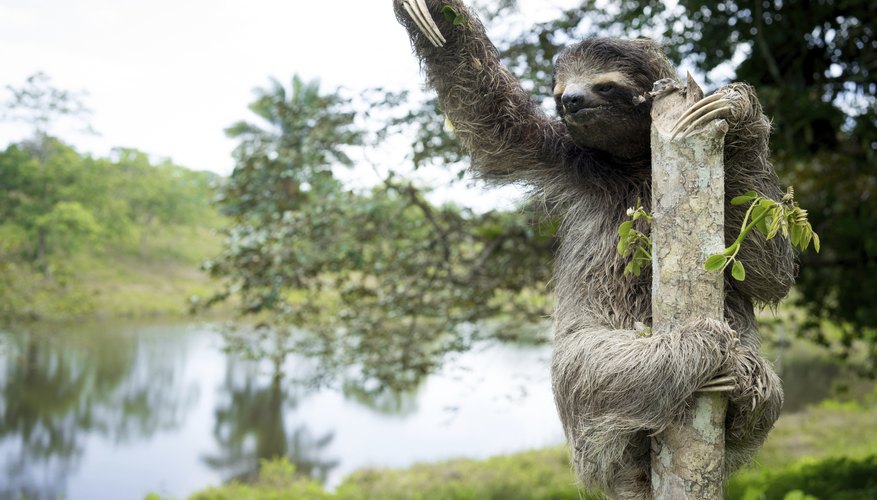The process that chronicles an organism from fertilisation to the age of reproduction is called its life cycle. Animals' life cycles differ in the amount of time it takes from conception to the arrival of the infant animal, the gestation stage and the maturation phase. The time it takes for a growing sloth to reach sexual maturity depends on its species, but for the most part, three-toed sloths and two-toed sloths have similar life cycles.
Types
The most basic differentiation between sloths is that there are two-toed and three-toed sloths. These sloths can also be separated according to their order, family, genus and species as designated by their taxonomy. Two-toed sloths belong to the Choloepus genus, and three-toed sloths belong to the Bradypus genus, essentially making the three-toed sloths and toe-toed sloths cousins. The Choloepus and the Bradypus genera each have separate sloth species, and each individual species has several characteristics of its own.
- The most basic differentiation between sloths is that there are two-toed and three-toed sloths.
- Two-toed sloths belong to the Choloepus genus, and three-toed sloths belong to the Bradypus genus, essentially making the three-toed sloths and toe-toed sloths cousins.
Gestation
The sloth's gestation period differs for each sloth species. The brown-throated three-toed sloth's gestation period is approximately 150 days, and it produces one young. A Hoffman's two-toed sloth's gestation period lasts 11 1/2 months, producing one young. Linnaeus' two-toed sloth has a gestation period that lasts for six months, producing one young. All sloths, regardless of their species, give birth upside down high up in tree canopies.
- The sloth's gestation period differs for each sloth species.
- A Hoffman's two-toed sloth's gestation period lasts 11 1/2 months, producing one young.
Birth
Sloths give birth within the tree canopy. Sloth babies are born with claws. The single offspring that the sloth produces clings to its mother until it is able to feed itself. For Hoffman's two-toed sloth, this period lasts for five months. Baby sloths cling to their mothers' abdomens until they can hang upside down on their own, which takes about three weeks after they are born.
- Sloths give birth within the tree canopy.
- Baby sloths cling to their mothers' abdomens until they can hang upside down on their own, which takes about three weeks after they are born.
Adolescence
Hoffman's two-toed sloth babies remain with their mothers for two years. Pale-throated three-toed sloth males do not play active roles in the lives of their mates or offspring. This means that an adolescent sloth learns its eating patterns, survival tactics and general behavioural patterns from its mother. According to the University of Michigan's Museum of Zoology, "sloths inherit not only their mother's preference for particular kinds of leaves but also the specialised gut flora to digest them."
- Hoffman's two-toed sloth babies remain with their mothers for two years.
- This means that an adolescent sloth learns its eating patterns, survival tactics and general behavioural patterns from its mother.
Maturity
Female sloths reach maturity before male sloths. Hoffman's two-toed sloth males reach maturity between 4 and 5 years of age, and the females reach maturity at 3 1/2 years of age. Mature Hoffman's two-toed sloths weigh from 4 to 8 kg, are 21 to 29 inches in length, and have a lifespan from 12 to 20 years. A mature brown-throated three-toed sloth weighs 3.5 to 4.kg, is 20 to 21 inches long and has a tail length of 1.5 to 2 inches. Linnaeus' two-toed sloths mature between the ages of 3 and 5 years.
- Female sloths reach maturity before male sloths.
- Mature Hoffman's two-toed sloths weigh from 4 to 8 kg, are 21 to 29 inches in length, and have a lifespan from 12 to 20 years.
